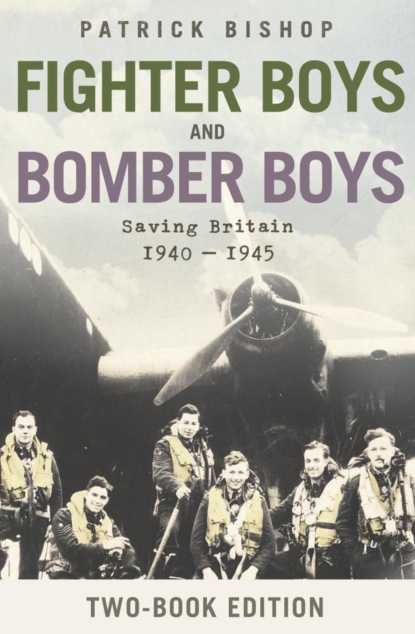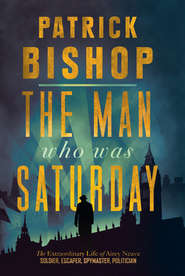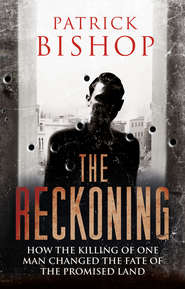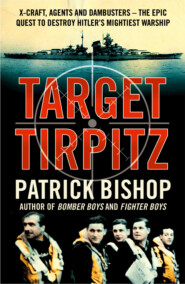По всем вопросам обращайтесь на: info@litportal.ru
(©) 2003-2024.
✖
Fighter Boys and Bomber Boys: Saving Britain 1940-1945
Настройки чтения
Размер шрифта
Высота строк
Поля
As a sportsman he was keen on trophies and the mess of his ‘Flying Circus’ was hung with the debris of his victims’ aircraft. It was a habit he shared with Mannock, another inveterate crash-site scavenger. In keeping with the hunter’s philosophy, he admired his prey and had strong ideas about what quarry was worthy of him. Between the ‘French tricksters’ and ‘those daring fellows, the English’, he preferred the English, though he believed that frequently what the latter took to be bravery ‘can only be described as stupidity’. Richthofen, of course, subscribed to the courtly view of air fighting – ‘the last vestige of knightly individual combat’. But he was sensible about how it should be practised. ‘The great thing in air fighting is that the decisive factor does not lie in trick flying but solely in the personal ability and energy of the aviator. A flying man may be able to loop and do all the tricks imaginable and yet he may not succeed in shooting down a single enemy. In my opinion, the aggressive spirit is everything.’
(#litres_trial_promo) It was an observation that was to prove equally valid when the two sides met again in the air twenty-three years later.
Richthofen’s caution meant that in a long fighting career he sustained only one injury before the end. It came on 21 April 1918 when his red Fokker triplane crashed into a beet field at Vaux-sur-Somme. As with Mannock and Ball, the exact circumstances of his death are confused. The credit for it was contested. Captain Roy Brown of 209 Squadron plausibly claimed to have been shooting at Richthofen when he went in. So, too, did an Australian machine-gun battery in the vicinity. The body was removed from the wreckage and taken to Poulainville airfield fifteen kilometres away. Richthofen was laid out in a hangar on a strip of corrugated metal, staring upwards, in unconscious imitation of the effigy of a medieval knight. In the night soldiers and airmen came in and rifled his pockets for souvenirs.
The notion of ‘aces’ placed Richthofen, Mannock, Ball and perhaps a dozen others at the pinnacle of their weird profession. Beneath them were thousands of other aviators who, though mostly anonymous, none the less regarded themselves as special. The faces that look back from the old RFC photographs are bold and open. The men have modern looks and modern smiles. Unlike the army types, whose stilted sepia portraits require an effort of imagination to bring to life, you can visualize the flesh and blood. The images pulse with confidence.
Unorthodox, even louche, though the pilots seemed to the military establishment, the ethos of the RFC was public school. Cecil Lewis, on applying to join, was interviewed by a staff officer, Lord Hugh Cecil.
‘So you were at Oundle?’
‘Yes, sir.’
‘Under the great Sanderson?’
‘Er – yes, sir.’
‘Play any games?’
‘Yes, sir. I got my school colours at fives, and I captained the house on the river.’
‘Fives, you say? You should have a good eye, then.’
After a brief discussion as to whether his six foot three inches would be a major handicap, Lewis was in.
(#litres_trial_promo)
But there were plenty of pilots who knew nothing of the school close or the college eight. James McCudden, one of the RFC’s greatest pilots, started his career as a boy bugler in the Royal Engineers before transferring to the RFC as a mechanic. Once inside, though, class was always waiting to pounce. John Grider, an American serving with 85 Squadron, recounted how his fellow pilots objected to having McCudden as their commanding officer, ‘because he was once a Tommy and his father was a sergeant-major in the old army. I couldn’t see that that was anything against him but the English have great ideas of caste.’
(#litres_trial_promo) The technical ability that flying demanded meant that the RFC could not afford to be exclusive, even though some of the attitudes struck by the pilots seemed in the spirit of a cavalry regiment of another, more raffish time.
The airmen liked alcohol and women, though there were notable exceptions. Ball was teetotal, and had no girlfriend until his meeting with Flora. Mannock drank little and seems to have shown a courtly restraint towards females. Like Ball, he was planning marriage before his death, to a Sister Flanagan who was nursing in France. For Lewis and many like him, though, the bar and the brothel provided fun and relief after the appalling strain. Their playful attitude was summed up in a 1915 drinking song, describing the finale to a day in which the squadron has only narrowly escaped a mauling by an Albatros Jasta.
But safely at the ‘drome once more, we feel quite gay and bright.
We’ll take a car to Amiens and have dinner there tonight.
We’ll swank along the boulevards and meet the girls of France.
To hell with the Army Medical! We’ll take our ruddy chance!
In the cafés of Amiens there seemed to be a large supply of young women happy to entertain Allied pilots who were undeterred by the risk of a dose of clap. Then, as later, wings on a tunic exercised a strong attraction, as Lewis discovered (describing the incident rather coyly in the third person) when he removed his greatcoat after returning with an eighteen-year-old to her room and its vast black iron-and-brass bed.
‘Ah! Tu es pilote! Que j’aime les pilotes!’
‘Yes?’
‘Yais! Yais!’ she imitated, deftly catching a handful of his hair and tugging at it. ‘Tue es beau, tu sais.’ She was on his knee again, and under her open blouse the hollow of her young shoulder seemed infinite in its promise.
(#litres_trial_promo)
Squadrons would lay on spectacular ‘drunks’ at which the participants sucked on a sponge soaked in a cocktail of whisky and champagne, mixed in a bucket. It was drinking to forget. Insouciance was obligatory. Each death in Mannock’s diary is recorded in the same carefully offhand way – ‘poor old Shaw went West’, ‘We’ve lost poor old Davis’, etc. Trenchard had a policy of ‘no empty chairs at breakfast’ to discourage brooding, replacing pilots instantly, often with greenhorns who were themselves propelled straight to death. During the bad times, the mess at nightfall could be a very melancholy place.
In such an atmosphere you grew fatalistic, and as time went by and left you unscathed, like a batsman who has played himself in, you began to take liberties with the bowling, [Lewis wrote]. You took unnecessary risks, you volunteered for dangerous jobs, you provoked enemy aircraft to attack you. You were invulnerable: nothing could touch you. Then, when one of the old hands, as seemingly invulnerable as yourself, went West, you suddenly got cold feet. It wasn’t possible to be sure – even of yourself. At this stage it required most courage to go on – a sort of plodding fatalism, a determination, a cold-blooded effort of will. And always alone! No friends right and left, no crowd morale.
(#litres_trial_promo)
Crack-ups were routine. Pilots got to recognize the signs in each other and were sympathetic. Mannock, who was hard on anyone he suspected of hanging back, was kindly towards those he saw were reaching the end of their tether, and in contrast to the trenches a certain humanity seems to have guided posting policy so the bad cases were sent to less arduous duties.
Whatever their personal dreads, the pilots were always grateful they were not on the ground. They looked down at the ‘poor little maggoty men’ toiling in the churned and polluted earth below and blessed their luck. From time to time, they saw the lines at close quarters and the reality was sickeningly brought home. The 20th of July 1917 was a bad day for Mannock. Having shot down a two-seater, he went to inspect the wreckage and discovered a ‘little black and tan terrier – dead – in the observer’s seat. I felt exactly like a murderer. The journey to the trenches was rather nauseating – dead men’s legs sticking through the sides with putties and boots still on – bits of bones and skulls with the hair peeling off, and tons of equipment and clothing lying about. This sort of thing, together with the strong graveyard stench and the dead and mangled body of the pilot (an NCO), combined to upset me for a few days.’
(#litres_trial_promo)
By the last two years of the war, whatever faint notions of nobility and romance may have clung to the business of air fighting had faded. The headlong style of Ball had given way to cold stalking tactics. The general slowness of the aircraft and the narrowness of the speed margins meant that the attacker approached gradually, leaving plenty of time to reflect on what he was doing as he overhauled his prey.
The most successful pilots spent hours synchronizing their guns and sights. McCudden would seek out the sluggish two-seaters on reconnaissance and, taking great care not to be seen, approach slowly to attack from the blind spot behind the enemy plane, finishing the job with a single carefully aimed burst. ‘My system was always to attack the Hun at his disadvantage if possible,’ he wrote before his death in a crash.
(#litres_trial_promo)
Mannock dinned into his pilots a basic rule of survival: always above; seldom on the same level; never underneath. The huge tactical advantage of invisibility, gained by having the sun at your back, was quickly understood by both sides, but all light conditions carried their advantages and disadvantages. Allied pilots would lurk in the dusk falling in the east to catch Germans on their way home.
Richthofen, despite his fantasies of knightly combat, made sure he had every advantage possible when he went out to deliver death, protected by his fellow pilots when the odds were in the German favour, allowing him to attack without fear of ambush and breaking off if he felt his opponent was getting the upper hand.
It was all a long way from Rabagliati’s gentlemanly airborne duel in August 1914. Yet when the end came the survivors felt a sort of regret at the passing of what they already saw as aerial warfare’s heroic era. Cecil Lewis was in a village near Ypres when the news of the Armistice came through. ‘So it was over. I confess to a feeling of anticlimax…when you have been living a certain kind of life for four years, living as part of a single-minded and united effort, its sudden cessation leaves your roots in the air, baffled and, for the moment, disgruntled. But the readjustment was rapid and soon we began to explore the possibilities of peace. Where should we go? What should we do?’
(#litres_trial_promo)
2 Fighters versus Bombers (#ulink_561b7639-28ba-5b0b-ad30-e954d422c065)
The possession of an air force the size of the RAF was an affront to the peacetime mood of economy and war-weariness. Under Trenchard it had grown huge. By the end of the war it had 30,122 officers, 263,410 men and 188 combat squadrons.
(#litres_trial_promo) Shortly after the Armistice a decision was taken to prune back the service to a modest force of thirty-three squadrons. The Northcliffe press and air-power enthusiasts in Parliament denounced the myopia of the policy and warned that German quiescence was only temporary. But hardship, public disgust with war and a belief in Britain’s ability to rise to the occasion in a future crisis ensured, until the rise of Hitler forced a change of mind, that a frugal attitude to air spending was maintained. In August 1925, the belief that there was no war on the horizon became official policy with the Cabinet’s adoption of the ‘ten-year rule’, which stated that, in revising defence estimates, it should be assumed that the Empire would not be involved in a major conflict for a decade.
Trenchard was put in charge of supervising the new incarnation. He was philosophical about the new restraints. In his brisk memorandum setting out the post-war organization of the RAF he compared the force to ‘the prophet Jonah’s gourd. The necessities of war created it in a night, but the economies of peace have to a large extent caused it to wither in a day, and we are now faced with the necessity of replacing it with a plant of deeper root.’
(#litres_trial_promo)
The RAF needed roots if it was to resist the grasping hands of the army and navy, who were once again eager now that the war was over to snatch back control of air assets so they could apply them to their own particular needs. They maintained this covetous attitude throughout the inter-war period. Trenchard fought a canny and tenacious defensive campaign. As Chief of the Air Staff, he limited himself to providing ‘the vital essentials of a skeleton force while giving way on every possible detail on which he felt expense could be spared’.
(#litres_trial_promo) He reined in his obstreperous nature and tried to make the best use of the tiny resources available. He needed institutions that would provide the foundations of the new force and establish it as an independent reality, and to arrange the limited manpower at his disposal in the most efficient and flexible way.
In this delicate job he had the backing of Winston Churchill, Secretary of State for War and Air, who had, predictably, been enthusiastic about flying since its inception, even trying to qualify as a pilot and almost killing himself in the process. None the less Churchill’s support could be fickle and his resolve slacken when faced with the opposition of strong vested interests.
In a paper written for Churchill, Trenchard concluded that the future could be approached in two ways. The first was ‘to use the air simply as a means of conveyance, captained by chauffeurs, weighted by the navy and army personnel, to carry out reconnaissance for the navy or army, drop bombs at places specified by them…or observe for their artillery’. The other choice was ‘to really make an air service which will encourage and develop airmanship, or better still, the air spirit, like the naval spirit, and to make it a force that will profoundly alter the strategy of the future’.
(#litres_trial_promo)
He argued his case for the latter in front of the prime minister, Lloyd George, and the Cabinet, who accepted, with some financial restraints, his and Churchill’s main points. The proposals were set out in a 7,000-word White Paper. The document stated that ‘the principle to be kept in mind in forming the framework of the Air Service is that in the future the main portion of it will consist of an Independent Force, together with Service personnel required in carrying out Aeronautical Research’. With that established, the RAF was saved from assimilation by its hungry older rivals, though Trenchard threw them a scrap by allowing that smaller units within it would be specially trained for cooperation work with the army and navy and would probably be absorbed into their organizations in future.











